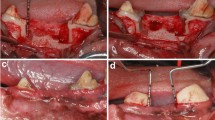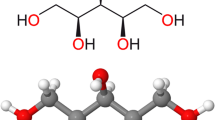Abstract
Mouthwash is one of the most commonly oral healthcare products for prevention and treatment of gum diseases. Dr. ECA is a disinfectant solution manufactured by a Vietnamese company and has been licensed for oral healthcare, but its effect on gingivitis is still unclear. To evaluate the effectiveness of this product in the treatment of gingivitis, we conducted a clinical study in 60 students diagnosed with gingivitis to compare the results of gingivitis treatment using Dr. ECA and a control mouthwash (a demonstrated anti-gingivitis product). The data showed that in the treated group, the rate of good Gingivitis Index (GI) before treatment was 46.67%, but after 2 and 4 weeks of using Dr. ECA that rate was increased to 96.67% and 100%, respectively. The percentage of patients with bleeding on probing was 63.33% but declined sharply after 2 weeks of treatment to 6.67%, and further reduced to 3.33% after 4 weeks of treatment. The treatment outcomes in were similar in the Dr. ECA treated group and control one with no statistically significant difference. Our results suggest that the electrolyte saline solution Dr. ECA is effective in treating gingivitis. Its effects are similar to other mouthwash products that had been approved and marketed.

Similar content being viewed by others
References
Ainamo J, Bay I (1975) Problems and proposals for recording gingivitis and plaque. Int Dent J 25:229–235
American Academy of Periodontology Task Force Report on the Update to the 1999 classification of periodontal diseases and conditions (2015) J Periodontol 86:835–838
Armitage GC (1999) Development of a classification system for periodontal diseases and conditions. Ann Periodontol 4:1–6
Armitage GC (2004) Periodontal diagnoses and classification of periodontal diseases. Periodontology 34:9–21
Greene JC, Vermillion JR (1964) Simplified Oral Hygiene Index. J Am Dent Assoc 68:7–13
Gulabivala K, Stock CJ, Lewsey JD, Ghori S, Ng YL, Spratt DA (2004) Effectiveness of electrochemically activated water as an irrigant in an infected tooth model. Int Endod J 37:624–631
Helme AJ, Ismail MN, Scarano FJ, Yang CL (2010) Bactericidal efficacy of electrochemically activated solutions and of commercially available hypochlorite. Br J Biomed Sci 67:105–108
Herrera D (2013) Chlorhexidine mouthwash reduces plaque and gingivitis. Evid Based Dent 14:17–18
Huong DM, Hang LTT, Nhu Ngoc VT, Anh LQ, Son LH, Chu D-T, Le D-H (2017) Prevalence of early childhood caries and its related risk factors in preschoolers: result from a cross sectional study in Vietnam. Pediatric Dent J 27:79–84
Ignatov I, Gluhchev G, Karadzhov S, Miloshev G, Ivanov N, Mosin O (2015a) Preparation of electrochemically activated water solutions (catholyte/anolyte) and studying their physical-chemical properties. J Health Med Nurs 13:64–78
Ignatov I, Gluhchev G, Karadzhov S, Miloshev G, Ivanov N, Mosin O (2015b) Preparation of electrochemically activated water solutions (catholyte/anolyte) and studying their physical-chemical properties. J Med Physiol Biophys 11:1–21
Lata S, Mohanty SK, Pradhan PK, Patri G, Sinha SP, Agrawal P (2016) Anti bacterial effectiveness of electro- chemically activated (ECA) water as a root canal irrigant—an in-vitro comparative study. J Clin Diagn Res 10:ZC138–ZC142
Loe H (1967) The Gingival Index, the Plaque Index and the Retention Index Systems. J Periodontol 38(Suppl):610–616
Loe H, Silness J (1963) Periodontal disease in pregnancy. I. prevalence and severity. Acta Odontol Scand 21:533–551
Maria Augusta Bessa Rebelo ACdQ (2011) Gingival indices: state of art, gingival diseases - their aetiology, prevention and treatment InTech Europe, Croatia, pp 4–53
Ngân NHK, Nghĩa LL, Hương ĐTL (2015) Đặc điểm lâm sàng viêm lợi và hiệu quả điều trị viêm lợi mảng bám đơn thuần có sử dụng nước súc miệng Chlohexidine ở sinh viên Trường ĐH Y Hà Nội. BSYK—Trường đại học y Hà Nội
Ngoc VTN et al (2018) The higher prevalence of developmental defects of enamel in the dioxin-affected region than non-dioxin-affected region: result from a cross-sectional study in Vietnam. Odontology
Prilutsky VIВ, Bakhir VM (1997) Electrochemically activated water: Anomalous properties, Mechanism of biological action. Moscow: VNIIIMT:1, p 124
Priya BM, Anitha V, Shanmugam M, Ashwath B, Sylva SD, Vigneshwari SK (2015) Efficacy of chlorhexidine and green tea mouthwashes in the management of dental plaque-induced gingivitis: a comparative clinical study. Contemp Clin Dent 6:505–509
Richards D (2017) Chlorhexidine mouthwash plaque levels and gingival health. Evid Based Dent 18:37–38
Funding
The EVD Group provided Dr. ECA solution and a part of the expenses for this research.
Author information
Authors and Affiliations
Contributions
TNNV and DTC designed experiments. VTNV, DLD, VNB and MST, TTPN and QAL designed, performed experiments, and collected data and informed consents. TNNV, DTC, KHN, VHP, and TCD analyzed and interpreted the results. VTNV, DLD, DTC, VHP, and TCD wrote the manuscript. DTC, KHN, VHP, and TCD edited the manuscript. All authors approved the final manuscript.
Corresponding authors
Ethics declarations
Conflict of interest
The authors declare no conflict of interest.
Ethical approval
All procedures performed in this study involving human participants were in accordance with the ethical standards of the Hanoi Medical University’s Ethics Council committee and with the 1964 Helsinki declaration and its later amendments or comparable ethical standards. This study was approved by the Hanoi Medical University’s Ethics Council committee (No. 121/HMU IRB).
Informed consent
Informed consent was obtained from the patients included in the study.
Rights and permissions
About this article
Cite this article
Vo, T.N.N., Chu, DT., Duong, D.L. et al. Efficacy of electrochemically activated water solution in gingivitis treatment. J. Pharm. Investig. 49, 323–329 (2019). https://doi.org/10.1007/s40005-018-00419-7
Received:
Accepted:
Published:
Issue Date:
DOI: https://doi.org/10.1007/s40005-018-00419-7




